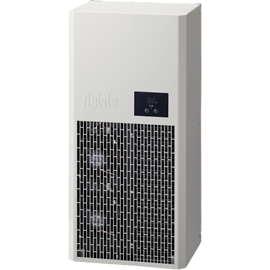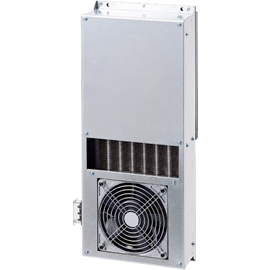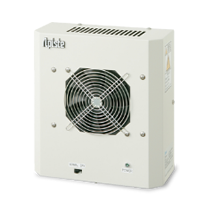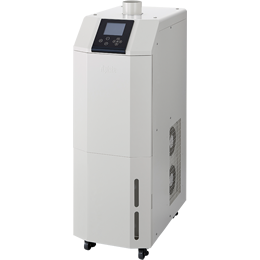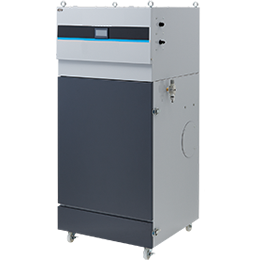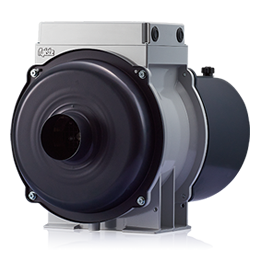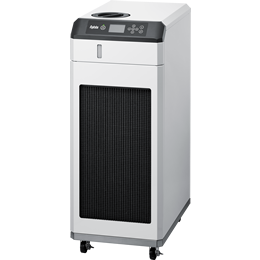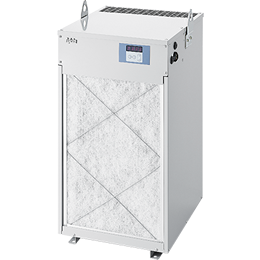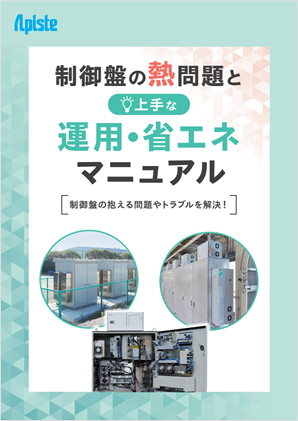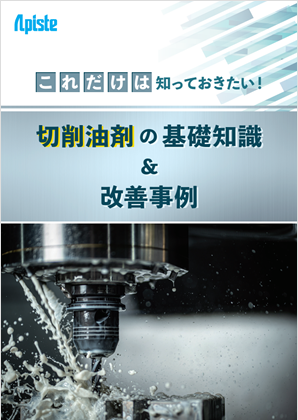Technical Information
1-1.What is air?
This explains what air is, its state, and how to express it.
(1) What is air?
Oxygen is essential for our biological activity. We take in this oxygen from the "air" that is naturally present all around us. The gases that surround the Earth up to the atmosphere are called the atmosphere, and we generally refer to the gases around us, including water vapor, as air.
(2) Air components
Air mainly consists of the following components:
1. Nitrogen (N2)
It is a colorless, tasteless, odorless, and non-toxic gas.
It is the most abundant component in air, making up approximately 78%.
Because it is inert and inexpensive, it is used as an inert gas in production sites and other places.
2. Oxygen (O2)
It is a colorless, odorless gas. Its liquid and solid forms are slightly bluish. It accounts for approximately 21% of air.
It reacts with other elements to form oxide compounds.
It is consumed by living organisms through oxygen respiration and combustion, but is produced by plants through photosynthesis.
3. Argon (Ar)
It is a colorless, odorless, inert gas and a rare gas element that rarely undergoes chemical reactions.
It is the third most abundant element in the air, making up about 1%.
It is widely used as an inert gas in welding, silicon manufacturing, and other applications.
4. Carbon dioxide (CO2)
It is a colorless, odorless gas, also known as carbon dioxide.
It does not become a liquid at normal pressure, but sublimes at -79°C to become solid dry ice.
It is produced during breathing and combustion. Carbon dioxide emissions are a greenhouse gas that causes global warming, and developed countries are seeking ways to reduce emissions globally.
(3) Dry air and moist air
dry air
Air contains various components, but theoretically air that does not contain any water vapor is called dry air.
Humid air
The air around us contains oxygen, nitrogen, argon, carbon dioxide, and also water.
Moisture in the air exists not as droplets (liquid) but as water vapor (gas).
Air that contains this water vapor is called humid air.
When air can no longer contain water vapor, it is called saturated air (= saturated state), and at saturated state the humidity is 100%. When the air comes into contact with a cold object in this state, it cools down and the water vapor no longer remains in the air but turns into droplets. This is condensation.
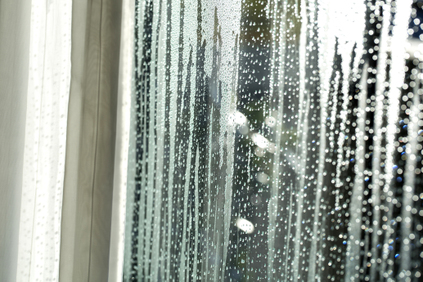
(4) How to express and types of air temperature and humidity
○Temperature expressions and types
1. Dry bulb temperature [℃ DB] (DB...Dry bulb)
This is the temperature we normally refer to as air temperature. It can be measured using a rod thermometer filled with mercury or alcohol.
2. Wet bulb temperature [℃ WB] (WB...Wet bulb)
This is the temperature measured using a wet bulb thermometer, where the bulb is covered with gauze moistened with water. As water evaporates, it takes away heat, so the display temperature is lower than the dry bulb temperature. It is affected by humidity; the lower the humidity, the less water vapor there is in the air, making it easier for it to evaporate, so the wet bulb temperature will be lower.
3. Dew point temperature [℃ DP] (DP...Dew Point)
This is the temperature at which water vapor in the air begins to condense when the air temperature is lowered.
○ Humidity expressions and types
1. Relative Humidity [%RH] (RH…Relative Humidity)
This is the humidity that we commonly use in our daily lives, and is also used in weather forecasts.
It is defined as follows:
"The ratio of the partial pressure of water vapor in moist air to the partial pressure of water vapor in saturated air at the same temperature"
2. Absolute humidity [kg/kg (DA)] (DA...Dry Air)
It is the weight of water vapor contained in 1 kg of dry air in moist air.
It is said that a comfortable humidity level for a space where people live or reside is about 0.01 kg/kg (DA).
(5) Expression and types of air pressure
The air around us (atmosphere) exists far above the atmosphere. When a very small amount of air (weight per certain volume) is deposited far above the air, its weight is weighed on the ground, and this pressure is called atmospheric pressure.
There is an international standard for atmospheric pressure based on the average atmospheric pressure above the sea level.
101325 Pa = 1013.25 hPa = 0.101325 MPa
It is stipulated. This is called standard atmospheric pressure.
There are two types of pressure expressions: absolute pressure and gauge pressure. Gauge pressure is commonly used in air conditioning.
1. Absolute pressure [MPa] (kgf/cm2 abs)
A state in which there is no gas at all is called a perfect vacuum, and absolute pressure is the pressure when this absolute vacuum is used as the reference (0).
It is mainly used when discussing thermodynamics.
2. Gauge pressure [MPa(G)] (kgf/cm2 G)
The pressure measured when standard atmospheric pressure is used as the reference (0) is called gauge pressure.
The value measured with a pressure gauge in the atmosphere is gauge pressure. In other words, even when the value measured with a pressure gauge in the atmosphere is 0 MPa (G), the pressure on the pressure gauge is 1 atmosphere (0.1013 MPa).
To summarise the relationship,
Absolute pressure = gauge pressure + atmospheric pressure (0.1 MPa)
It will be.
Next item: 1-2. What is air conditioning?
People who viewed this page also checked out these documents:
Inquiry
For product inquiries, quote requests, etc.
Please feel free to contact us.


